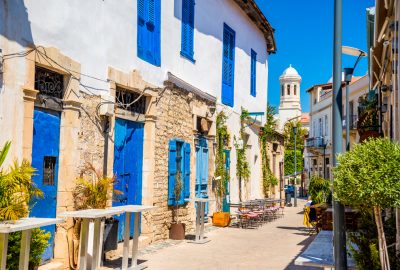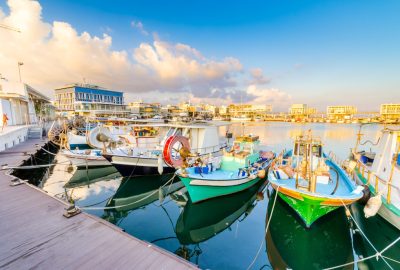Limassol is a city like no other. It’s thoroughly Greek, but also genuinely cosmopolitan. Most Mediterranean resorts are basic, cookie-cutter towns. Tourists spend their days on the beaches and party at night. There might be an Old Town if you’re lucky. That’s it. Almost every resort there is identical. Limassol breaks out of that mold. It pulled off a combination of both the resort and the big city vibes. Kind of like Miami. That’s mostly thanks to Limassol’s location and status as a major business and trade centre. “Gateway into Europe”, I’m not a fan of this term. I mean there are a few Gateways into Europe. If you’re nicknaming something then at least make it unique. It’s not a shopping mall, after all. People have lived here long before Europe even had a name. Despite that, Limassol gained major significance during the Crusades. Funny thing is that Cyprus was conquered by Richard the Lionheart for the sole reason of the local governor being a dickhead. Isaac Komnenos was the king of the island and Richard was casually passing through. Leading a crusade and stuff and his wife-to-be was following in another ship. Crusades were clearly in the top 10 most romantic dates back then. Isaac figured he’d kidnap the fair lady and demand ransom. Richard would have none of that so he just took Cyprus instead. This is a very simplified summary of the events.

Genethliou Mitellla, this cosy and picturesque pedestrian street is Limassol's most famous street and leads to the Ayia Napa Cathedral, another local tourist staple
The important thing is that Lionheart threw a wedding in Limassol. It got wild. He even ordered booze from the nearby village of Kolossi. Commandaria is the name of that wine and it’s still being made. You can buy wine declared “the wine of kings and king of wines” by Richard the Lionheart. How cool is that? The celebrations took place in Limassol Castle. Back then castles were built for function, not as a symbol of status. It’s charming but not as picturesque as the ones in Europe. There are signs of religious worship below the present building. Some suspect that it stands on top of Limassol’s first cathedral. Cyprus Medieval Museum is located inside the castle if you’d like to learn more. You’re in the middle of the Old Town; ancient history is all around you. Walk the stone-paved alleys like the Genethliou Mitellla, have a drink while enjoying the ambience. Saripolou Square is the main plaza of Limassol’s Old Town. It’s the busiest spot for bar crawls and clubbing. The party here often lasts until the early morning hours.
Have you ever wondered why so many buildings are painted white and blue here? The Ottoman Empire ruled this region and outlawed any signs of patriotism. Greeks couldn’t express their feelings out loud so they painted their homes in national colours. It’s also practical; white paint reflects the sun's rays, keeps the interior cool. You won’t see many of these traditional homes outside of the Old Town. Key districts of Limassol are being redesigned towards more modern tastes. The Old Port was transformed and is almost detached from its humble fishing village roots. Now it’s a hub for nightlife and culinary delights. Fresh and affordable seafood is always a plus. The nearby Limassol Marina is a bit more upscale. Think of fancy gourmet food, champagne, and yachts rather than beer and fried calamari. This city has something in store for all sorts of crowds.

Palio Limani, the colourful Old Port of Limassol, has become the centre of local nightlife and and offers great opportunities for wining and dining
Personally, I really enjoy walking. I could spend all day walking around Limassol and exploring surrounding villages and beaches. There are eleven kilometres of coastline here, that’s a lot of beaches. You can travel to the nearby cities of Kourion and Amathus. Both are remains of ancient city-states dedicated to different gods of the Greek pantheon. Amathus was tightly knit into the mythology, being founded by one of the sons of Heracles. Another myth connects it with the birth of Adonis. There are some hilarious anecdotes about a temple in honour of the bearded Aphrodite. One of the recently uncovered sites is also home to a very particular ancient curse. “May your penis ache when you make love” sounds like a kindergarten insult now, but I’m sure it was very serious business back then.



No one commented yet. Be the first.